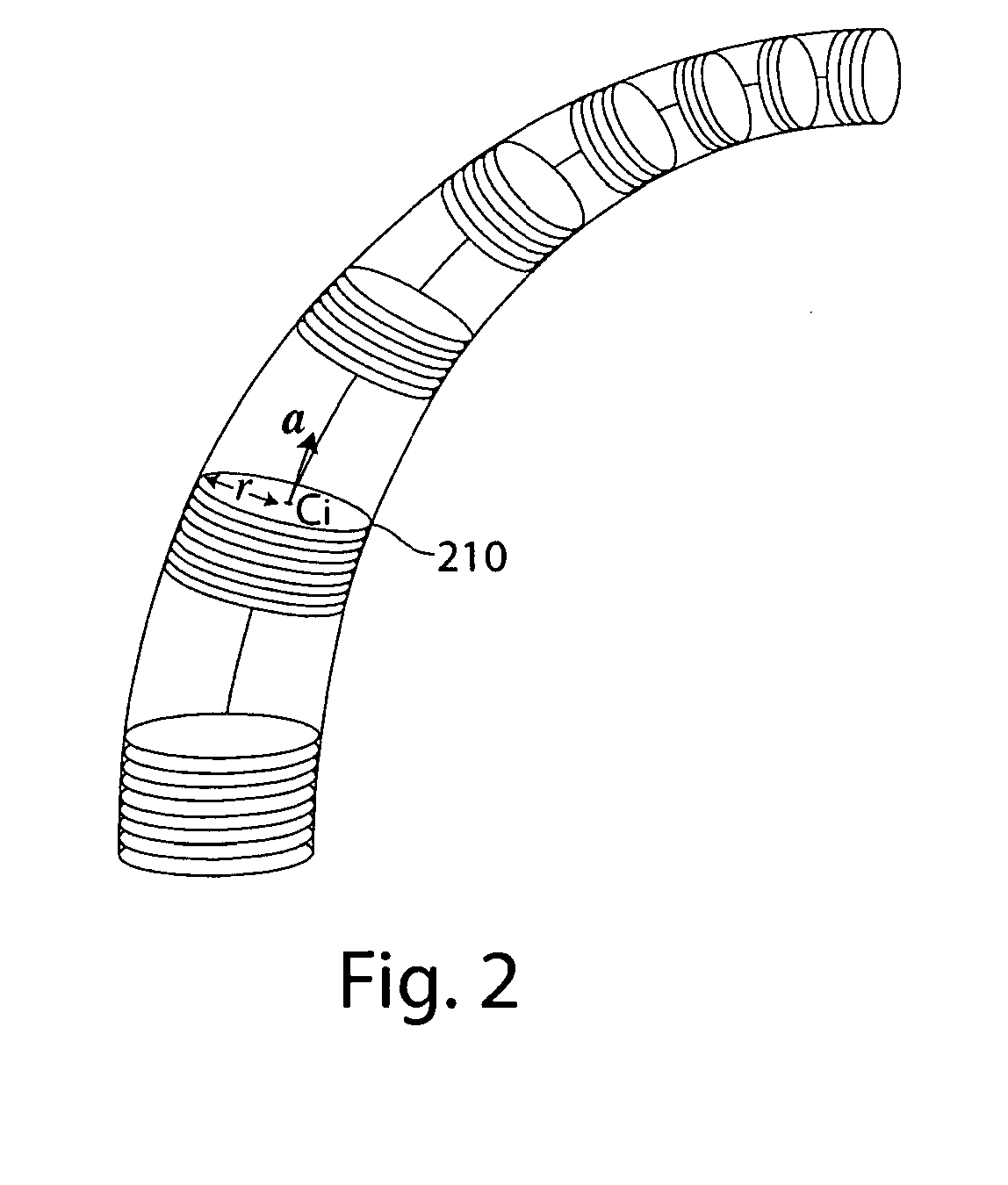Methods of obtaining geometry from images
- Summary
- Abstract
- Description
- Claims
- Application Information
AI Technical Summary
Benefits of technology
Problems solved by technology
Method used
Image
Examples
example 1
Xenotopic Tumor Models
[0261]A tumor model can be generated by inoculating human non-small cell lung tumor cell line (A549 from ATCC, Inc.) subcutaneously in immunodeficient mice (SCID). SCID male mice (6-8 weeks old from Charles River Inc.) are inoculated subcutaneously in the lower back with a suspension of 1×106 human lung tumor cells (A549) in 0.2 ml of PBS. All mice are fed normal chow diet throughout the duration of the experiment. All mice weights are measured throughout the experiment. Tumor size is measured with calipers twice-a-week and tumor volume is calculated using the formula Length2×Width×0.52. All mice are randomized into two treatment groups (approximately 10 mice per group) when the median tumor volume reaches approximately 500 mm3. The treatment groups can be treated according to the following schedule using intraperitoneal (i.p.) administration of either a control composition or an anti-angiogenic compound. For example, different levels of an anti-angiogenic comp...
example 2
[0267]Perfusion with a casting agent, Mercox (available from Ladd Research, Williston, Vt.) can be performed as follows. An initial anticoagulation step for each animal is performed using an i.v. injection of heparin (10,000 U / ml, 0.3 cc / mouse). After 30 minutes, the animals are anesthetized. Each animal's heart is cannulated and the animal perfused with warm physiological saline at physiological pressure (with an open vein draining the organ or with an open vena cava). Perfusion is continued until the organ or animal is clear of blood. Mercox monomer is filtered through a 0.5 μm filter and a casting resin is prepared by mixing 8 ml Mercox, 2 ml methylmethacrylate, and 0.3 ml catalyst. The resin is infused through the same cannula until the onset of polymerization (the resin changes color to brown and emits heat, ˜10 min). The organ or animal is carefully immersed in a 60° C. water bath for 2 hours (or overnight in a sealed container). The tissue is remov...
example 3
Xenotopic Tumor Models Response to Anti-Angiogenic Therapy
[0268]Xenotopic mouse models obtained as described in Example 1 were treated with either a control solution of saline / PBS or an anti-angiogenic preparation of Avastin® at 0.5 mg / kg / i.p. as described above. At the end-point, vascular casts were prepared as described in Example 2 above and analyzed for two treated mice (both treated with Avastin® at 0.5 mg / kg / i.p.) and one control mouse. The resulting vascular casts were scanned using a micro CT-scanner and the results of the structural analysis are shown in FIGS. 14-17. The analysis was performed by determining the number of blood vessels within bins of different diameter ranges for the xenotopic tumor in the treated and control animals. The bins were each 13.8 μm wide and the smallest bin included blood vessels having a diameter of between 20.7 μm and 34.5 μm. Mean tumor volumes did not differ significantly between the groups at the end of the experiment. However differences ...
PUM
 Login to View More
Login to View More Abstract
Description
Claims
Application Information
 Login to View More
Login to View More - R&D
- Intellectual Property
- Life Sciences
- Materials
- Tech Scout
- Unparalleled Data Quality
- Higher Quality Content
- 60% Fewer Hallucinations
Browse by: Latest US Patents, China's latest patents, Technical Efficacy Thesaurus, Application Domain, Technology Topic, Popular Technical Reports.
© 2025 PatSnap. All rights reserved.Legal|Privacy policy|Modern Slavery Act Transparency Statement|Sitemap|About US| Contact US: help@patsnap.com



